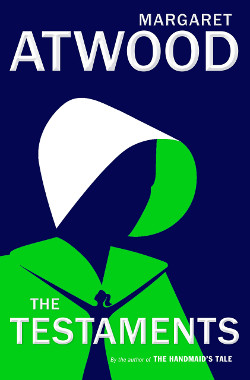2018 School Spending Survey Report
The Testaments
COPY ISBN
 In the decades since the publication of her great dystopian classic, The Handmaid’s Tale, Atwood has been frequently asked how the totalitarian, woman-oppressing Gilead finally fell. Her response is piercingly relevant, not only because the backstory continues to show how human rights can be eroded through a blend of power grab and compromise, but because it echoes international politics and the refugee crisis today. Refugees from Gilead have been struggling to reach Canada, and the smuggled-out Baby Nicole is a cause célèbre in Gilead, which in the classic style of its American antecedents has been aggressively intervening across its northern border to get her back and halt Mayday resistance to its authority. Through a series of testaments from a powerful source within Gilead and two crucial young witnesses, we see how a long-laid plan to effect Gilead's collapse is put into play. As the novel opens, an explosion takes the lives of two Maydayers parenting teenage Daisy, whose real identity won’t surprise readers even as it shocks her. Daisy is persuaded to join the battle against Gilead, while several young women in the country itself resist the frightening prospect of marriage by joining the nunlike Aunts. With Cat’s Eye majesty, Atwood nails the spirit of these women as she investigates the head Aunt’s scary complexities.
In the decades since the publication of her great dystopian classic, The Handmaid’s Tale, Atwood has been frequently asked how the totalitarian, woman-oppressing Gilead finally fell. Her response is piercingly relevant, not only because the backstory continues to show how human rights can be eroded through a blend of power grab and compromise, but because it echoes international politics and the refugee crisis today. Refugees from Gilead have been struggling to reach Canada, and the smuggled-out Baby Nicole is a cause célèbre in Gilead, which in the classic style of its American antecedents has been aggressively intervening across its northern border to get her back and halt Mayday resistance to its authority. Through a series of testaments from a powerful source within Gilead and two crucial young witnesses, we see how a long-laid plan to effect Gilead's collapse is put into play. As the novel opens, an explosion takes the lives of two Maydayers parenting teenage Daisy, whose real identity won’t surprise readers even as it shocks her. Daisy is persuaded to join the battle against Gilead, while several young women in the country itself resist the frightening prospect of marriage by joining the nunlike Aunts. With Cat’s Eye majesty, Atwood nails the spirit of these women as she investigates the head Aunt’s scary complexities.
VERDICT If The Handmaid’s Tale chills to the marrow, its sequel surges along with a sort of dark ebullience, absorbing as a thriller and ultimately hopeful even as it highlights the dangers that always lie in wait. [See Prepub Alert, 3/4/19.]
ALREADY A SUBSCRIBER? LOG IN
We are currently offering this content for free. Sign up now to activate your personal profile, where you can save articles for future viewing




Comment Policy:
Comment should not be empty !!!